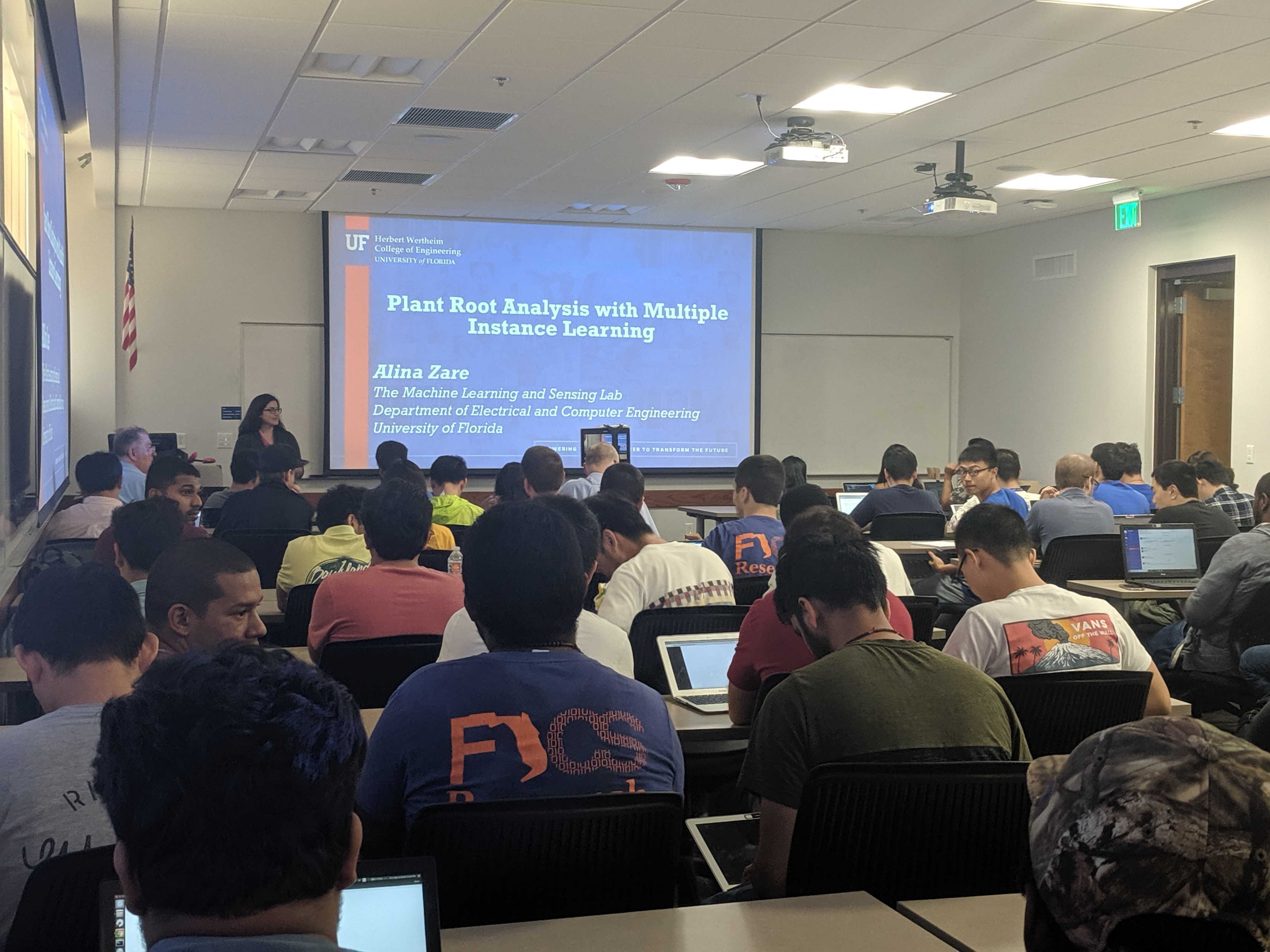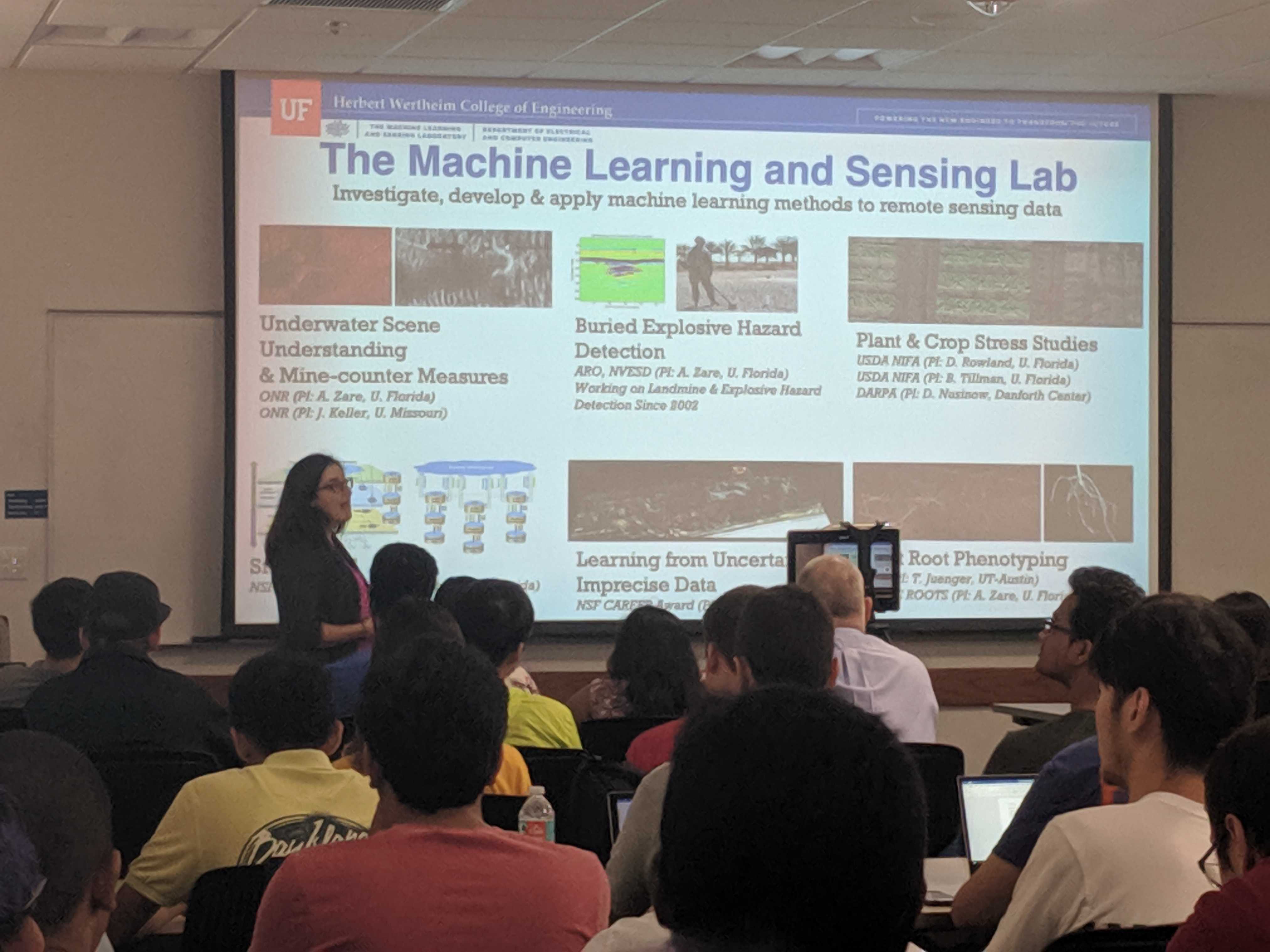
Yesterday, Dr. Alina Zare presented at the University of Florida Electrical and Computer Engineering (ECE) Department’s weekly seminar. In her talk, titled “Plant Root Analysis with Multiple Instance Learning”, Alina stressed the importance of root analysis for understanding drought resistance, crop yield, greenhouse gas mitigation and more. She also showed how the Machine Learning and Sensing Lab (MLSL) is applying the concept of Multiple Instance Learning (MIL) to facilitate current hindrances to algorithmic training and testing for root analysis.
This was a great opportunity to showcase some of the awesome work being conducted in the MLSL to a HUGE turnout of students, graduate students, and faculty! Additionally, she was able to demonstrate one practical way ML is being used to meet interdisciplinary research needs.
Great job Dr. Zare!


Abstract
In order to understand how to increase crop yields, breed drought tolerant plants, understand the relationship between root architecture and soil organic matter, and understand the role roots can play in greenhouse gas mitigation by enhancing the sequestration of carbon in soil, we need to be able to study plant root systems effectively. However, we are lacking high-throughput, high-quality sensors, instruments and techniques for plant root analysis. Techniques available for analyzing root systems in field conditions are generally very labor intensive, allow for the collection of only a limited amount of data and are often destructive to the plant. Once root data and imagery have been collected using current root imaging technology, analysis is often further hampered by the challenges associated with generating accurate training data.
Most supervised machine learning algorithms assume that each training data point is paired with an accurate training label. Obtaining accurate training label information is often time consuming and expensive, making it infeasible for large plant root image data sets. Furthermore, human annotators may be inconsistent when labeling a data set, providing inherently imprecise label information. Given this, often one has access only to inaccurately labeled training data. To overcome the lack of accurately labeled training, an approach that can learn from uncertain training labels, such as Multiple Instance Learning (MIL) methods, is required. In this talk, I will discuss our team’s approaches to characterizing and understanding plant roots using methods that focus on alleviating the labor intensive, expensive and time consuming aspects of algorithm training and testing.